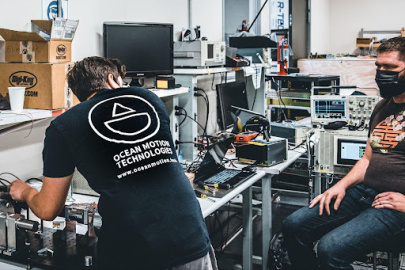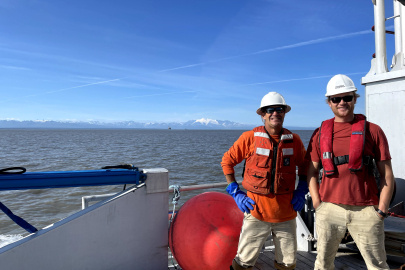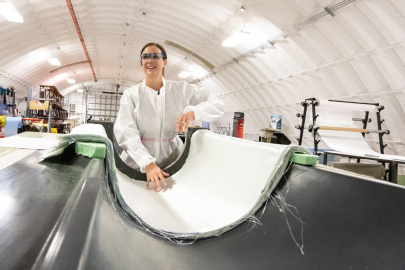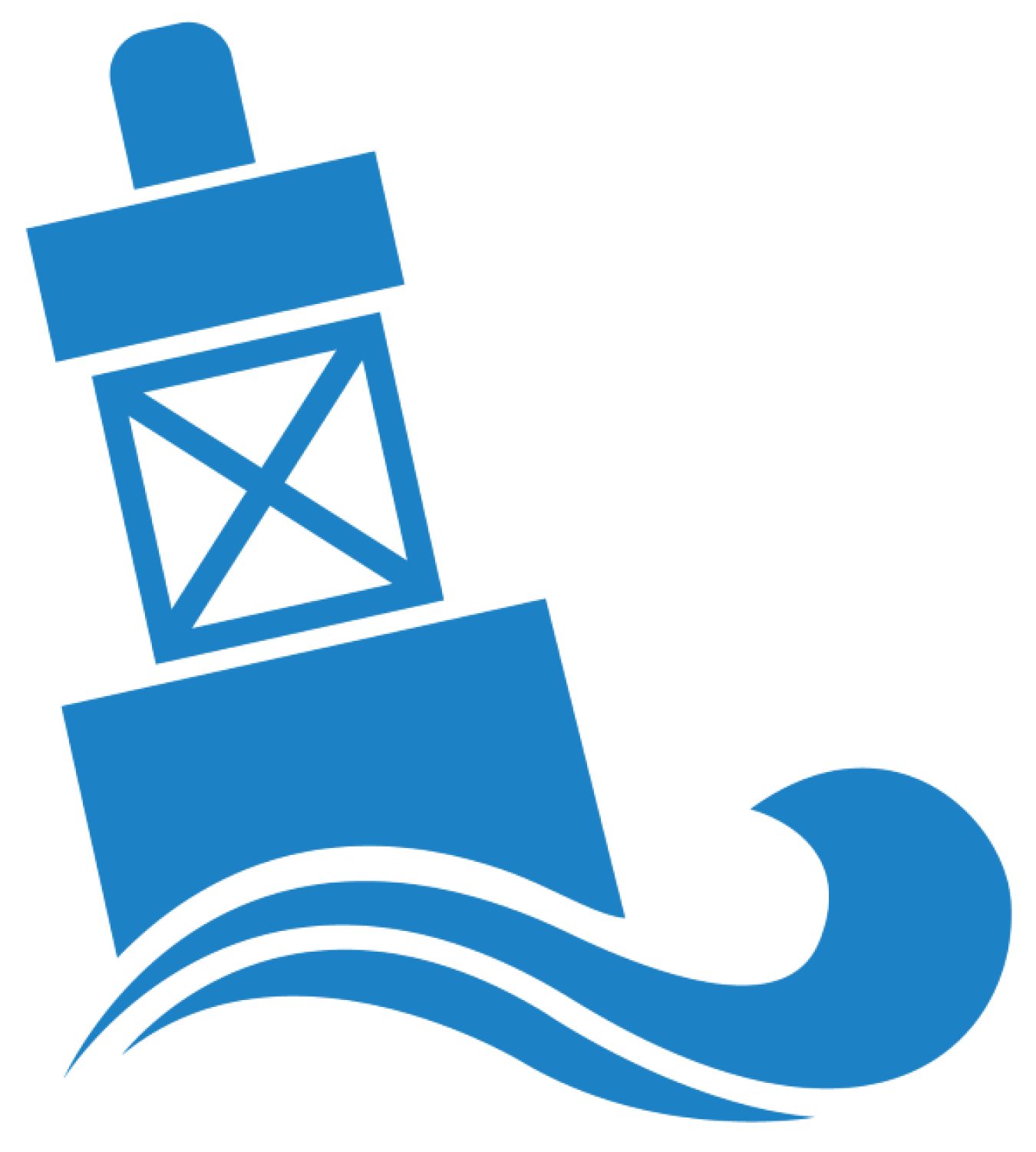Ocean Renewable Power Company developed a computational analysis tool that helped the company create new marine energy turbine foil (or blade) designs that reduce costs and increase energy capture by up to 24%.
Water Power Technologies Office
March 1, 2023Marine Energy Program
Foundational R&D
Project Name: Design of High-Deflection Foils for Marine Energy Applications
Project Team: Ocean Renewable Power Company (lead), Sandia National Laboratories, and University of New Hampshire
Lead Recipient Location: Portland, Maine

Ocean Renewable Power Company (ORPC) developed new marine energy hydrofoil (or blade) designs that use composite materials to reduce costs and increase energy capture by up to 24%. ORPC worked with the University of New Hampshire to collect data on the hydrofoil designs' performance that could help the water power industry improve reliability of marine energy systems with more advanced blade designs.
ORPC also developed a new computational data toolset for modeling and simulating foils for crossflow turbines, which are vertical-axis water power turbines with spinning blades oriented perpendicular to the direction of water flow. The toolset analyzes how turbine blades bend (or deflect) as a result of water currents, which can impact foil performance. This enables turbine designers to select foil materials that provide a desired amount of deflection and achieve a higher level of confidence that the turbine will perform as designed.
The University of New Hampshire collected data from a scale model of the hydrofoil to compare with results from the toolset, and the dataset will be available for use by the water power industry. Additionally, Sandia National Laboratories provided guidance on the selection and installation of fiber optic sensors and supplied devices that transfer data from the rotating turbine to a stationary data acquisition system.
Foundational R&D Projects
-
 A project team led by Ocean Motion Technologies deployed a prototype wave energy converter technology that can harness power from waves as small as those created by boat wakes.
A project team led by Ocean Motion Technologies deployed a prototype wave energy converter technology that can harness power from waves as small as those created by boat wakes. -
 Marine energy developers can now access more data on the tidal energy resources available in Alaska’s Cook Inlet, wave hindcast data up to 42 years, and a new tool to estimate how much energy their device could produce at various U.S. sites.
Marine energy developers can now access more data on the tidal energy resources available in Alaska’s Cook Inlet, wave hindcast data up to 42 years, and a new tool to estimate how much energy their device could produce at various U.S. sites. -
 More than 100 experts shared ideas on research needs and funding gaps that must be addressed to advance marine energy and help build longer lasting and more affordable and efficient marine energy solutions.
More than 100 experts shared ideas on research needs and funding gaps that must be addressed to advance marine energy and help build longer lasting and more affordable and efficient marine energy solutions.
WPTO's Marine Energy e-newsletter shares news and updates on tools, analysis, and emerging technologies to advance marine energy.
The WPTO e-newsletter brings funding opportunities, events, publications, hydropower, and marine energy updates directly to your inbox.


